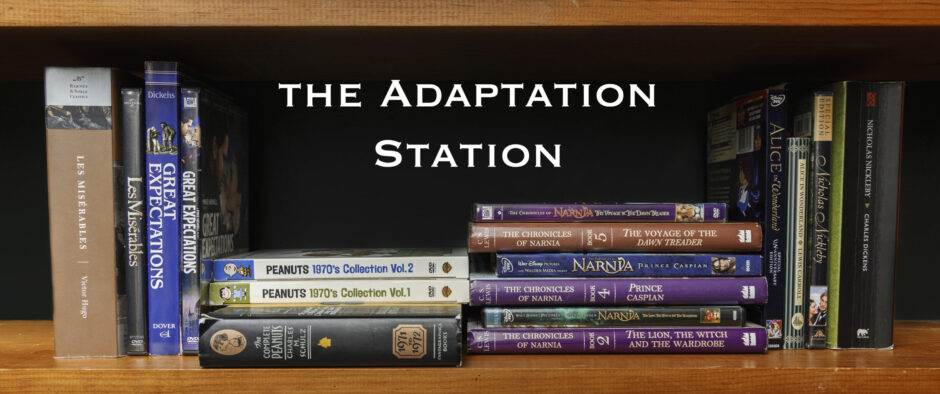This post is dedicated to the memory of my family’s cat, Winston, who sadly passed on this week. That may seem random, but watch the movie and you’ll see why it’s appropriate.
I wasn’t the biggest fan of children’s author Beverly Clearly growing up. She has accurately been described as a pioneer of realism in juvenile fiction and I had little or no use for realism. As you can probably discern from the stories about which I choose to blog, my taste runs toward the comedic, the fantastic and the melodramatic. I saw no point in reading books about modern day middle class American kids like me dealing with parents, teachers, siblings, peers, etc. Why read about what I could experience every day?
Yet for all that, I kept returning to Cleary’s series about young Ramona Quimby. I think even then, I was impressed by the psychological believability of fiery, gung-ho Ramona and her more practical older sister, Beezus (Beatrice.)[1]Though, of course, I wouldn’t have used the phrase “psychological believability” at the age I first read the books. And as an adult and a would-be author myself, I’ve developed a respect for realism, though it still isn’t my favorite thing to read. To write something that feels exactly like it could happen in real life is an awesome balancing act, one I could never do.
I was not impressed by the trailers for the 2010 movie, Ramona and Beezus, which looked like they turned the Ramona books into a lowbrow kids’ comedy. But intrigued by some positive, though not glowing, reviews, I gave it a watch and I’m happy to say that it’s an affectionate and honorable adaptation. Not an ideal adaptation, mind you, but hey, as the final book in the series, Ramona’s World, reminds us, nothing is perfect, but things can still be pretty great.
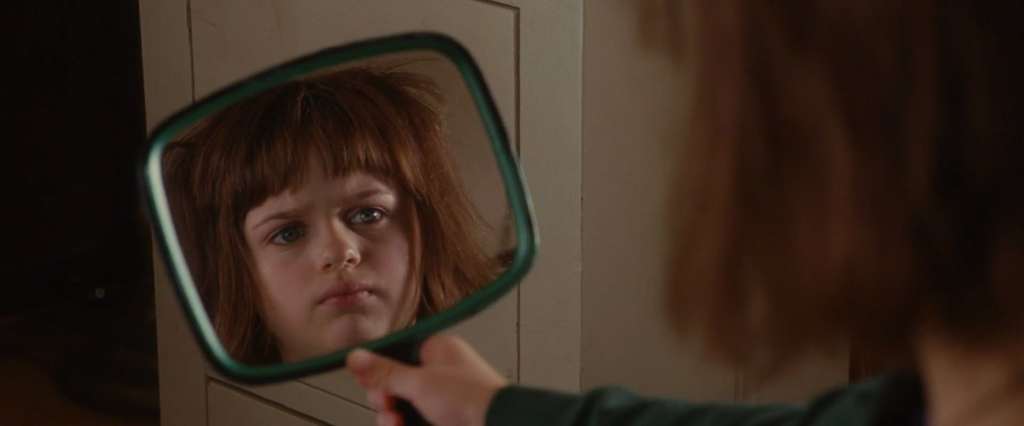
I won’t sugarcoat it. This movie does a lot of the things fans of the books might fear.[2]For non-fans these probably won’t register as faults and may even be attractions. The cast is more Hollywood-attractive than they should be. In particular, it’s rather ridiculous for Selena Gomez’s Beezus to be worried about her hair.[3]Incidentally, while Beezus is a major figure in the movie, there’s no reason why she should have get title billing, and I have to assume it was because of Gomez’s relative star power. I give Ginnifer Goodwin as the girls’ Aunt Bea a pass since she was specifically described as young and pretty in the books. Dialogue is quippier than in the books and less like regular people talking. Feel-good moments are sappier and also feel less real. And there’s a sprinkling-just a sprinkling-of slapstick. Perhaps most irritating for adult Beverly Cleary enthusiasts, Ramona’s believable maturity/immaturity level is compromised. This is partly an inevitable side effect of the movie taking various episodes from a series that begins with Ramona starting kindergarten and ends with her turning ten and fitting them all into one story where she’s nine.[4]Actually, the literary Ramona was technically introduced as a pesky preschooler and supporting character in an earlier series of books by Cleary before she got one to herself. For example, it’s unlikely that a nine-year-old would do such a poor job explaining to her teacher (Sandra Oh) and classmates about the new addition to her family’s house.[5]In the movie and in the book, Ramona the Brave, where she’s six, she unintentionally makes it sound like a bunch of workmen randomly came to her house and made a big hole in it. But not all of it can be chalked up to the compressed timeline. In the book, Ramona and her Father, Ramona briefly considered making a lemonade stand to help support her financially struggling family, but quickly dismissed the idea as unprofitable. In Ramona and Beezus, not only does she actually try to sell lemonade, but she uses her great-grandmother’s crystal. This makes Ramona less astute at nine years old than she was at seven in the books.
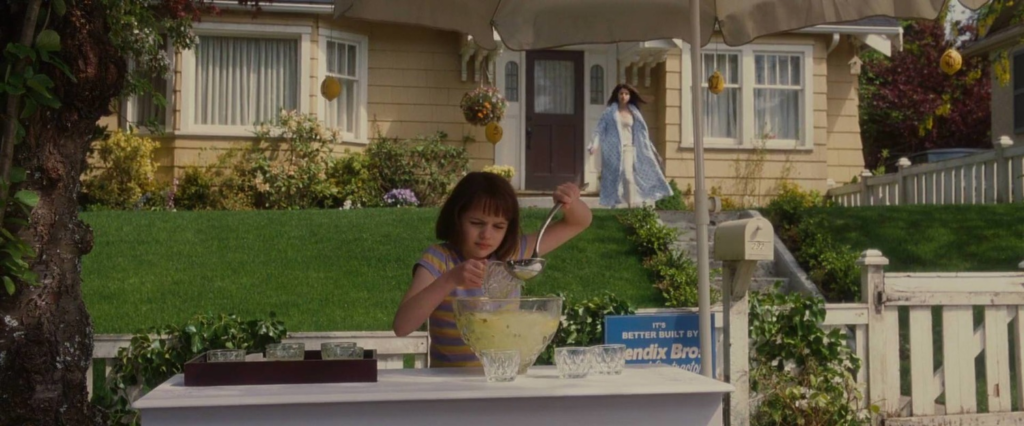
What makes this forgivable for me is Joey King’s wonderful portrayal of the character, which captures the essence of Ramona at every age of her childhood. It’s hard for me to define that essence in words, but King does it with her performance. Maybe it’s that while her comedic timing is perfect, she never lets on that she thinks of her character as being funny. Ramona clearly sees herself as very dignified and is bewildered and offended when adults laugh at her. King even kind of looks like Ramona in this movie with her short brown hair!

I described the movie’s inclusion of so many episodes from different books as a problem but it’s also a strength. The sheer number of memorable incidents from the series that make their way into the movie really give the impression that the screenwriters, Laurie Craig and Nick Pustay, were fans. Occasionally, a major source of drama from the books, such as Grandma Kemp (Janet Wright) telling Ramona to be careful around young Willa Jean (Ruby Curtis) when Willa Jean is clearly the one who deserves a scolding or Ramona pulling the hair of her least favorite classmate, Susan (Sierra McCormick), pops up as an undeveloped bit of randomness in the movie. I suppose that’s technically a flaw, but for me it adds to the by-fans-for-fans vibe. My first viewing was actually something of an edge-of-my-seat experience as I could see Ramona about to walk into disasters I remembered from the books. And the script generally does a good job restructuring the material. Mr. and Mrs. Quimby (John Corbett and Bridget Moynahan) reading Beezus’s glowing report card and Ramona’s not so glowing one was originally part of the climax of Ramona the Brave, but it makes for an excellent early scene here to establish the family dynamic.
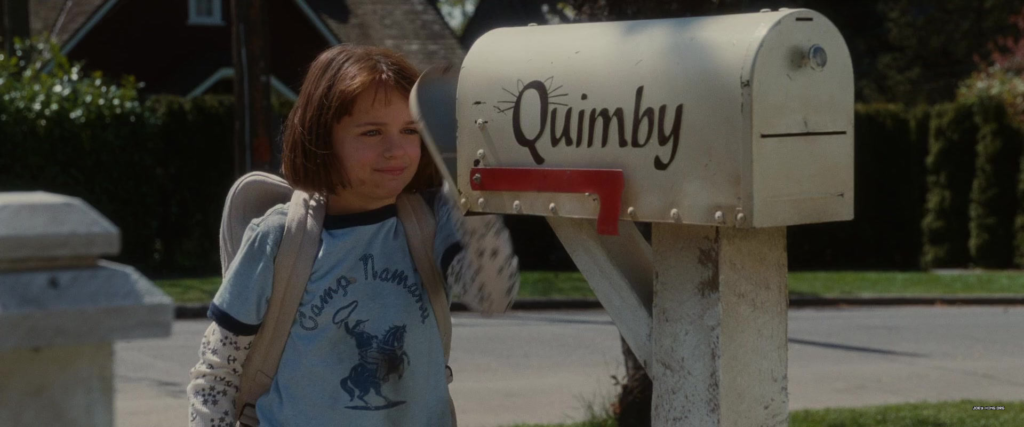
The main parts of the movie that aren’t from the books are the romantic subplots. In Ramona Forever, Aunt Bea’s romance with Hobert Kemp (Josh Duhamel), uncle to Ramona’s friend, Howie (Jason Spevack), happened “offpage.”[6]Speaking of Howie, his personality in this movie is pretty much nothing like it was in the books. Here he has more in common with Yard Ape. (Yes, there was a character called Yard Ape in the books.) … Continue reading Here they have a checkered romantic past. An analytical adult viewer unfamiliar with the books, who really isn’t the movie’s target audience, could probably guess that this part of the film is an addition since the scenes between Bea and Hobart are the only ones shown entirely from the perspective of adults. Otherwise, the movie is true to Cleary in that we only see them from the kids’ point of view but can infer quite a bit about them from that. I don’t love this new subplot, but I do enjoy how it adds to the drama for Ramona as she is gratified that her beloved aunt is initially as annoyed as she is by Hobart’s teasing and then feels betrayed when Bea accepts his proposal.[7]Ramona being annoyed by Hobart and being saddened by Aunt Bea moving far away comes straight from the books, but it plays out far more dramatically here.
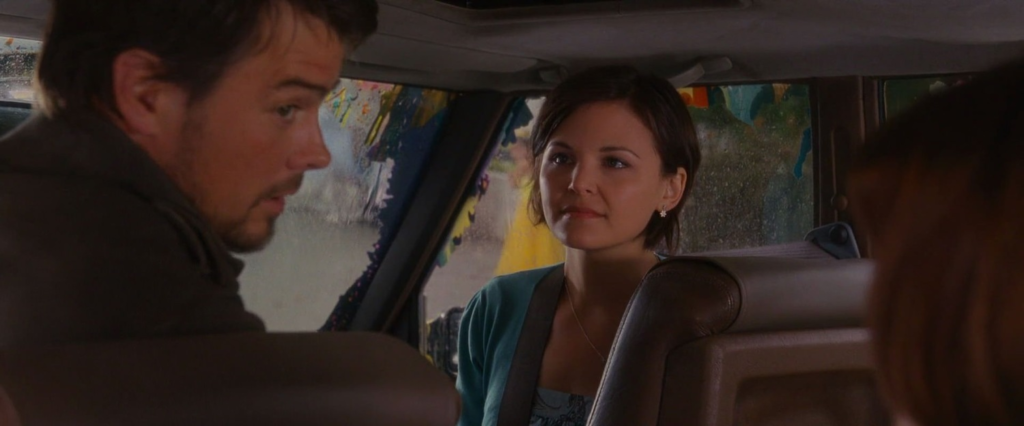
More eyebrow raising for longtime Cleary fans is the romantic tension between Beezus and her friend, Henry Huggins (Hutch Dano.) Henry was actually the lead in Cleary’s first series of books for young readers. He was a friend of Beezus, but they were not, I repeat, not an item.[8]Of course, they were also just kids. By the time, Cleary got around to writing about Beezus’s first boy-girl party in Ramona’s World, a party which ended up amusingly unsexy by the way, … Continue reading The movie’s Henry has almost nothing in common with the literary Henry Huggins.[9]At least I don’t think he does. I wasn’t as into the Henry books growing up as I was the Ramona books. I remember the Ramona-heavy Henry and the Clubhouse being the best of them. But on their own terms, he and his interactions with Beezus are appealingly awkward and non-heart throbby.
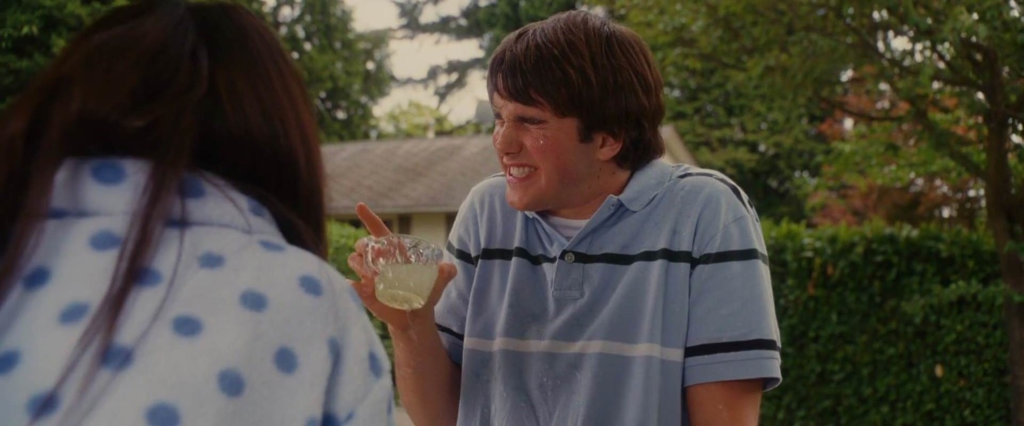
The movie indulges in some fantasy scenes showcasing Ramona’s vivid imagination. I think these would actually be funnier if they looked less goofy and I suspect that, like the romances, they were included partly for marketability purposes. But I appreciate the concept of conveying life as experienced by an imaginative nine-year-old. And at least one such scene, where an overheard comment about the possibility of the bank taking the house gives Ramona the mental image of a giant crane carrying away her home, leaving her family stranded, is pretty inspired.
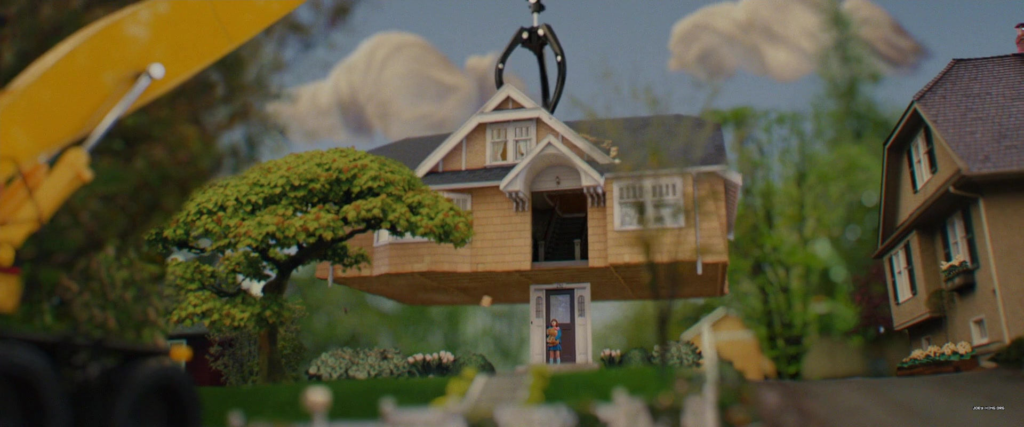
This brings me to something I really appreciate about this adaptation. Ironically, I feel like the best way to lead into it is to describe a scene from the books that it doesn’t adapt. At one point in Ramona and her Father, the Quimby family’s cat eats their jack-o-lantern. Beezus blames her parents for not buying the cat food he likes.
“Beezus, dear,” said Mrs. Quimby, “We simply cannot afford the brand of food Picky-picky used to eat. Now be reasonable.”
Beezus was in no mood to be reasonable. “Then how come Daddy can afford to smoke?” she demanded to know.
Ramona was astonished to hear her sister speak this way to her mother.
Mr. Quimby looked angry. “Young lady,” he said and when he called Beezus young lady, Ramona knew her sister had better watch out, “Young lady, I’ve heard enough about that old tom cat and his food. My cigarettes are none of your business.”
Ramona expected Beezus to say she was sorry or maybe burst into tears and run to her room. Instead, she pulled Picky-picky out from under the table and held him to her chest as if she were shielding him from danger. “They are too my business,” she informed her father. “Cigarettes can kill you. Your lungs will turn black, and you’ll die! We made posters about it at school. And besides, cigarettes pollute the air!”
Ramona was horrified by her sister’s daring and at the same time she was a tiny bit pleased. Beezus was usually well behaved while Ramona was the one who had tantrums. Then she was struck by the meaning of her sister’s angry words…
Ramona ends up being the one to cry over the unusual tension in her family and the new possibility of her father’s death. Her parents try to comfort her with assurance that they’ll get a new and better jack-o-lantern, leading her to wonder, “Didn’t grownups think children worried about anything but jack-o-lanterns? Didn’t they know children worried about grownups?”
While Ramona and Beezus seldom gets as dramatic as that, it understands that children do worry about grownups. It conveys the difficulties of growing up with adult problems that you don’t totally understand all around you as well as kid problems that the adults around you don’t necessarily understand. As sunny as the movie is, far too sunny to take place in Portland, Oregon, scenes of Ramona being humiliated in front of her class or some of the sharper arguments she has with her sister can really make you wince. But the movie is also true to the books by showing how a loving family, however imperfect, can help make this all bearable and how even clueless or otherwise annoying adults can have a kid’s back. And if this ends up feeling a bit more touchy-feely than the books do and a bit sillier, a bit more kid pandering and a bit more parent pandering, a bit too polished and tidy and Hollywood…well, like I said, I was never really a fan of realism.
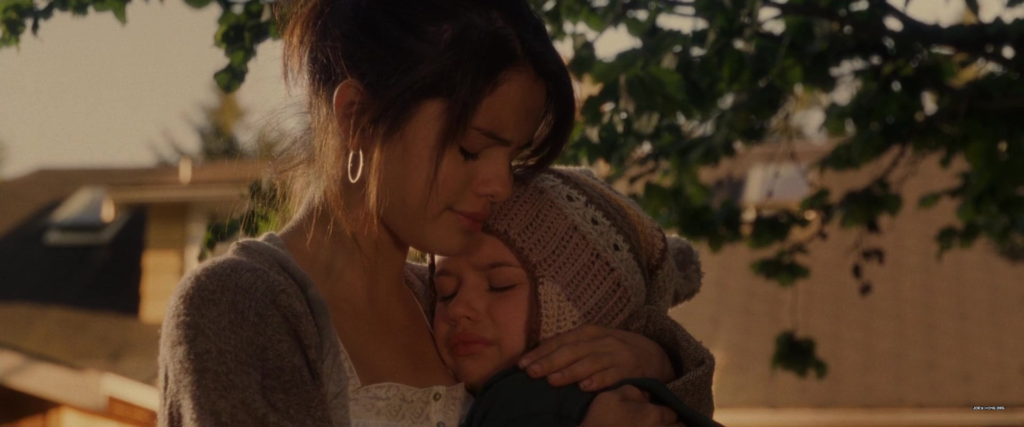
References
| ↑1 | Though, of course, I wouldn’t have used the phrase “psychological believability” at the age I first read the books. |
|---|---|
| ↑2 | For non-fans these probably won’t register as faults and may even be attractions. |
| ↑3 | Incidentally, while Beezus is a major figure in the movie, there’s no reason why she should have get title billing, and I have to assume it was because of Gomez’s relative star power. |
| ↑4 | Actually, the literary Ramona was technically introduced as a pesky preschooler and supporting character in an earlier series of books by Cleary before she got one to herself. |
| ↑5 | In the movie and in the book, Ramona the Brave, where she’s six, she unintentionally makes it sound like a bunch of workmen randomly came to her house and made a big hole in it. |
| ↑6 | Speaking of Howie, his personality in this movie is pretty much nothing like it was in the books. Here he has more in common with Yard Ape. (Yes, there was a character called Yard Ape in the books.) Since I was never a huge Howie fan, I’m fine with this. |
| ↑7 | Ramona being annoyed by Hobart and being saddened by Aunt Bea moving far away comes straight from the books, but it plays out far more dramatically here. |
| ↑8 | Of course, they were also just kids. By the time, Cleary got around to writing about Beezus’s first boy-girl party in Ramona’s World, a party which ended up amusingly unsexy by the way, Henry was already out of the picture. |
| ↑9 | At least I don’t think he does. I wasn’t as into the Henry books growing up as I was the Ramona books. I remember the Ramona-heavy Henry and the Clubhouse being the best of them. |
